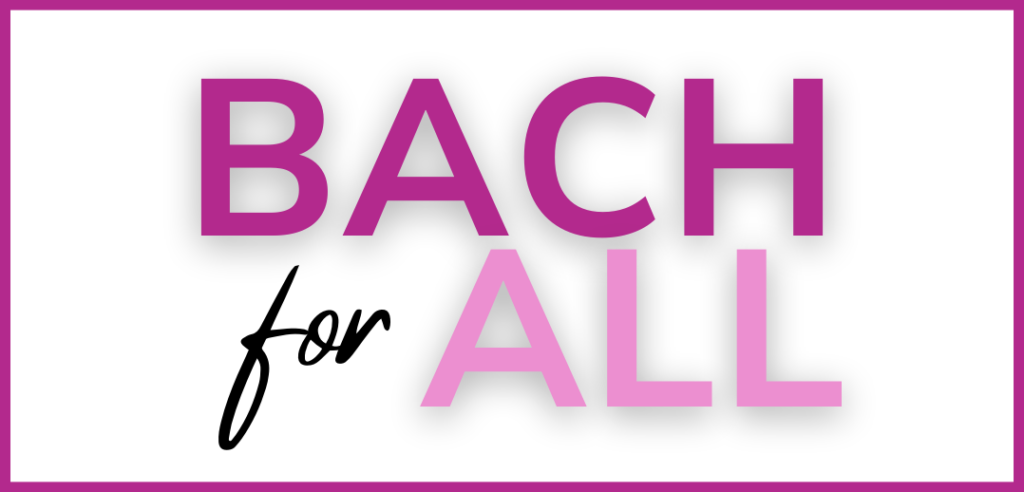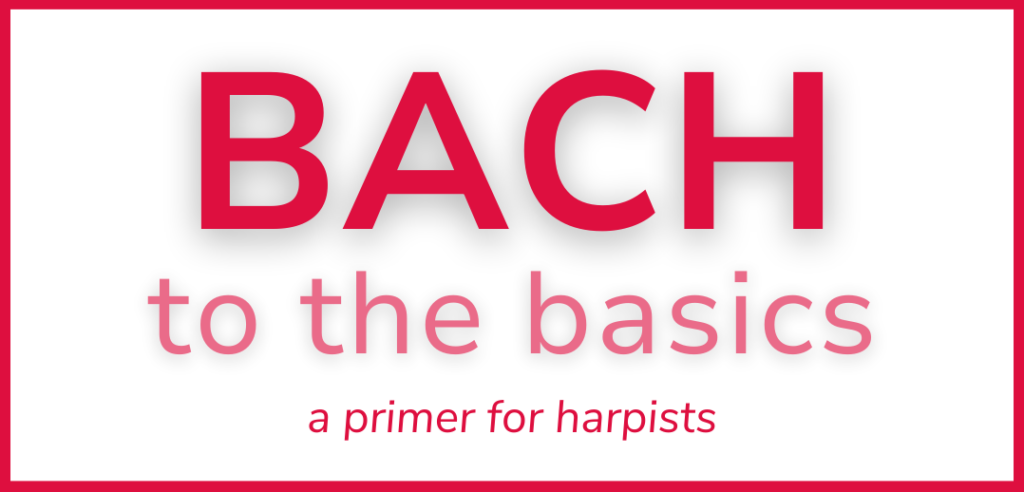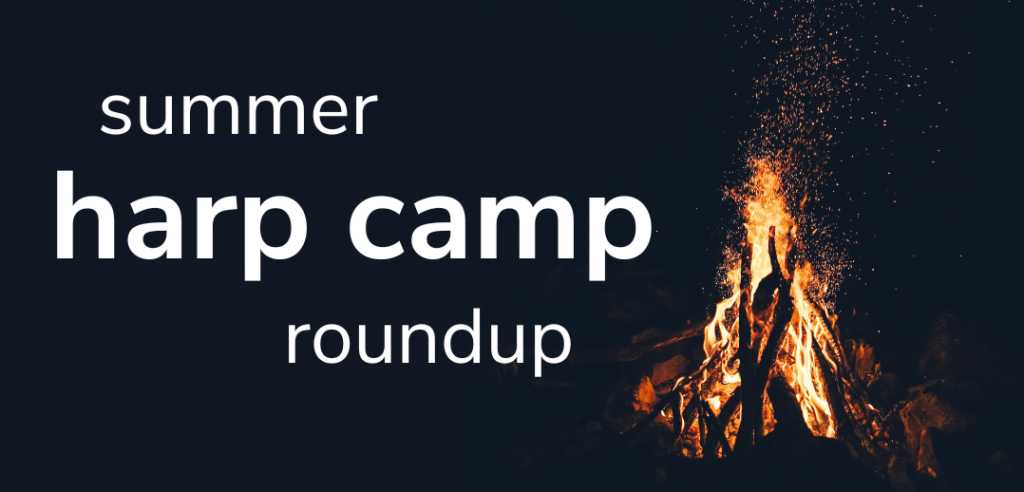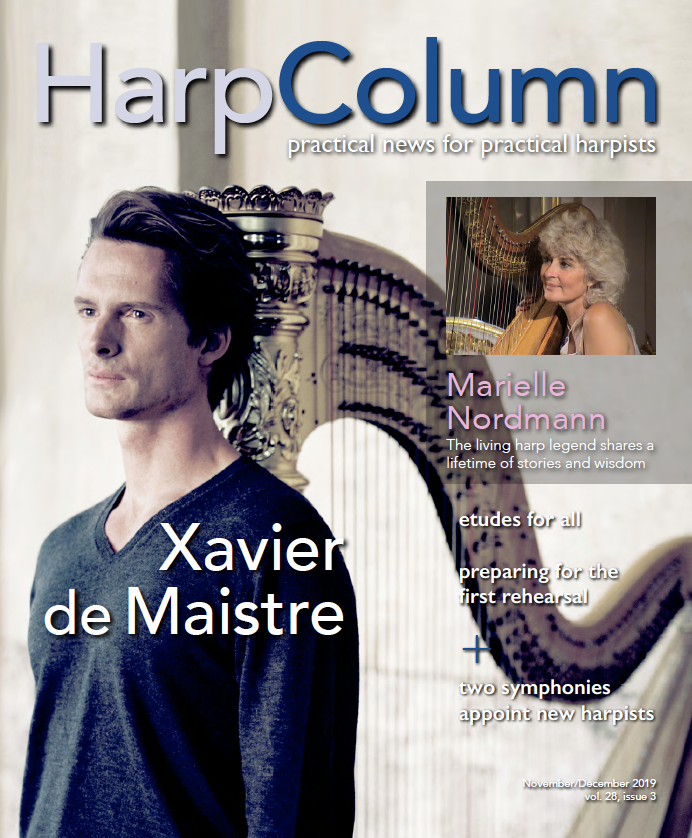Don’t know where to start? Check out our list of the best etudes for harpists at every level.
If the names Pischna, Hanon, and Czerny mean anything to you, then you probably had a piano teacher like mine. She was an excellent piano teacher, and so naturally, the etude books by these eminent 19th century pianists were part of my studies. Not surprisingly, my teacher saw more value in the etudes than I did. She knew they were invaluable training; my eight year old self wanted to play “real” music. To make matters worse, when I began harp lessons, I discovered harpists had to learn etudes too.
Today as a teacher, I am a convert to the critical importance of etudes for every harpist. I know the difference they have made in my harp journey, and I still rely on them for maintaining my technique and stretching my musicianship. When my students look dismayed at the new volume of etudes on their music stand, I nod sympathetically, add an encouraging word, and we begin.
Etudes, literally studies, became popular with the development of the piano in the 19th century. They were short pieces designed to help the student develop a particular technical or musical skill. Sometimes the etudes were pleasant music; often they focused on a single technical coordination at the expense of musical value. The best etudes managed to do both, allowing the student to grow musically as well as technically.
I am a convert to the critical importance of etudes for every harpist. I know the difference they have made in my harp journey, and I still rely on them for maintaining my technique and stretching my musicianship.
These etudes served as stepping stones, creating a halfway point between plain technical exercises that focused on sheer repetition of a single element, and repertoire pieces that were fully developed musically. This interim step allows the student to test a single technical skill in a limited way. Once a skill has been drilled in an exercise, then it can be tested in the restricted context of an etude, before it is put in service of actual repertoire.
This analogy may be helpful: Imagine someone has given you a brand-new set of tools. You open the toolkit and see a collection of wrenches, screwdrivers, hammers, and other tools you can’t even name. You’ve never worked with any of these tools before, but you’re excited to start using them. Then someone asks you to build a house with your tools. You aren’t sure which tool to use for what task, and you’re not very confident or skillful using them.
This is similar to what many harpists try to do with their playing. They practice their scales and rudimentary exercises; this is their toolkit. Then, however, they jump directly to learning repertoire without learning to master the use of those basic tools first. The result is that learning repertoire takes much longer and can be very frustrating.
Instead, if they learn to use those basic skills well first through studying etudes before they begin the repertoire piece, they will have the skills and facility they need to concentrate on the musical demands of the piece. Simply put, exercises teach your fingers what to do; etudes teach them how to do it in a musical context.
Because etudes are not specific to any one method or school of technique, you need to be clear on what proper technique means for you.
Some pieces could be considered etudes in disguise. Many “theme and variations” pieces fall into this category. Because the essential framework of the theme is repeated in each of the variations, this musical form often allows for the same type of focused technical work as an etude, and in a musical context.
Other pieces, too, can serve a similar function as an etude, although they aren’t designated as such. One distinct advantage of these “pieces with a purpose” is that the student is often less resistant to focusing on technical work when it is part of the musical fabric. The Trois Petites Pièces Faciles by Alphonse Hasselmans and Carlos Salzedo’s Preludes Intimes are two collections of short pieces that allow for focused technical and musical development.
Finally, there are the famous concert etudes. Only a couple of decades after the first etude books were published, composers began writing etudes that were repertoire pieces in their own right; Chopin’s piano etudes are familiar examples. Harpists have a wealth of concert etudes, including works by Tournier, Posse, Godefroid, and Zabel. Advanced harpists use etudes of this type as concert selections, as well as studies to keep their skills in top shape.
Before you can reap the benefits of practicing etudes, you must know the essential points of your technique. This includes all the physical aspects of playing the harp, from how you sit, to the position and motion of your arms, hands, and fingers; in short, the mechanics of playing the harp. Because etudes are not specific to any one method or school of technique, you need to be clear on what proper technique means for you.
Once the technical basics are in place, easy etudes will put your skills into action and begin to develop your familiarity with the characteristic fingering patterns found in harp music. This is the right time to use stepping stone etudes, as they are short and the intention behind each one is obvious. They are designed to increase facility with the most common technical situations like scales, intervals, chords, and arpeggios. Because these etudes are short, they don’t overtax a student’s focus or stamina, but help to build those skills gradually. It is important even in these simple etudes to emphasize the development of a good tone and relaxed playing.
Supplementing these etudes with similarly short pieces that develop the same skills helps to solidify the student’s grasp of the concepts and techniques. In addition, their higher level of musical interest encourages more expressive playing and is more enjoyable for the student.
At the intermediate level, the stepping stone etudes are considerably longer and more demanding. They continue to help the student build their technique vocabulary, but they demand increasingly higher levels of musicianship. They aim to build the student’s focus and stamina, as well as develop agility and speed. These etudes sound more like pieces than simple exercises, and so they require more from the student in terms of dynamics and expressive range.
It is critical at this stage not to only focus on the speed and musicality, however. The importance of continuing to strengthen and stretch the technique is still paramount. This means that these etudes must also be practiced slowly and carefully with great attention to the details of finger motion and placement. This is especially important as the student at this stage is usually learning more repertoire and may be neglecting the intentional refinement of their technique.
At an advanced level, etudes may be used for honing a specific technical skill, like trills, for instance. Many professionals use etudes to refresh their technique, to maintain their facility, to clarify their tone, or to extend their expressive range. Concert etudes not only serve these purposes well but are virtuoso recital pieces too.
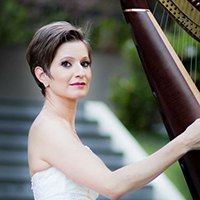
Since harpists come from varied backgrounds, I thought it would be interesting to find out how a few expert harpists and teachers approach etudes for themselves and their students.
Argentinian harpist Maria Luisa Rayan has performed to critical acclaim throughout Asia, Australia, Europe, Latin America, and the U.S. She has recorded two CDs and has published multiple arrangements of J.S. Bach and the music of Astor Piazzolla.
Lynne Aspnes is professor emeritus for the University of Michigan and a former faculty member of Arizona State University. She is current president of the American Harp Society.
Harpist Carl Swanson of Swanson Harp Company is the author of numerous scholarly articles and editions of masterpieces for the harp.
Bonnie Shaljean has a wide-ranging performance background in historical and traditional harp music which includes recordings, publications, broadcasts, and traveling throughout Britain and Ireland.
What do you consider the most important role of etudes in the development of a harpist?
MLR: The importance of etudes is that they give the freedom to concentrate on pure technical work, rather than concentrating on the overall interpretation of a piece. Now, this does not mean that the etude cannot be considered a piece.There are very complex and beautiful etudes that actually sound like a piece, but to me it means that the harpist can concentrate completely on a specific technical concept.

—Lynne Aspnes
LA: Opportunities for exploration…The etude is a comprehensive piece of music where the student applies their physical and aural skills to developing an ever-increasing physical stamina; to tuning the ear to the sound and tone colors we want to produce; to understanding the musical context of music and to communicating that knowledge through their interpretation.
CS: Pieces of music rarely, if ever, repeat any movement enough times to develop the muscle memory for those movements. That’s where etudes come in. Each etude focuses on a single movement (chords, octaves, scales, intervals, etc.) and works that movement over and over again in a variety of ways and in different places on the instrument. By the time you have learned that etude, you have the muscle memory for that movement.
BS: The key things I look for when selecting an etude (or a piece which serves the same function, whether or not it’s specifically designated as a study) are musicality, artistic beauty in its own right (so it can also serve as a repertoire piece), and building and advancing specific aspects of harp technique, which tend to appear over and over throughout harp literature. That way, when you master it in one piece, you’re also practicing for many others at the same time.
Which etudes are your personal favorites and why?
MLR: My absolute favorites are the old timers, Grossi and Pozzoli. I love their simplicity and the reinforcement of the same technical concept throughout various etudes.
LA: The Posse Eight Great Concert Studies, the operatic repertoire of Parish-Alvars, the Spohr Fantaisie and the Variations, all the Bach I can study, and the Salzedo Variations on a Theme in the Ancient Style. I return to this repertoire over and over again to keep my own technique sharp, and my musical skills pliable.

CS: The etudes that I use all the time are any of the Bochsa sets. Each set has a wide variety of patterns, and that is what you are looking for in a set of etudes: many patterns.
BS: Theme and variations are particularly fertile in this regard (e.g. John Thomas’ The Minstrel’s Adieu To His Native Land, and the Welsh historical settings of Edward Jones and John Parry). I also assign the Nutcracker cadenza and other orchestral excerpts to more advanced students, because it serves them in good stead if they take up symphony work. In addition, I frequently borrow from the piano and guitar, which can be highly valuable fields for harp repertoire. And, of course, J.S. Bach!
At what point in their study do you first introduce your students to etudes and which are the first etudes they learn?
MLR: If I am starting students, for sure they get etudes from day one!
LA: Once the student has some mastery over the fundamental physical aspects of playing the harp and understands the basics of musical vocabulary, the Ettore Pozzoli studies at the end of the Maria Grossi Method for the Harp integrate fundamental musical concepts quite nicely.
CS: Once the student can read lines and spaces, has worked through a beginner book, and can play simple pieces using both hands together, then it is time to start focusing on building technique…I always use the Bochsa 40 easy etudes, op. 318, and now that I have my own edition of that series, I use that. As the student progresses through that series, I assign pieces that correspond to the level they are at in the etudes.
BS: Usually Grade 3, with the Hasselmans Rouet (for pedal harp students). It’s quite popular with the kids.
In your opinion, is there a wrong way to use etudes?
MLR: I think the only way to use an etude the wrong way is to play it too slow, and even then that is not always so bad.
LA: Oh yes, indeed. As teachers I believe we have a responsibility to value the contributions of a variety of music and to instill in our students respect for the music in front of them, regardless of the appellation. To devalue the musical and/or technical skills that are addressed in etudes would fall into the category of misuse, for me anyway. From the entirely practical perspective there is also the potential to do harm with assigning repertoire if the existing skills required of the student to deliver the music successfully are not in place. This can instill a sense of inadequacy in the student, not to mention the potential for injury should the music being studied present physical challenges that are beyond the students’ ability to deliver.
CS: First off, etudes don’t teach technique! The teacher teaches technique and any set of etudes is simply a format for teaching that. So do not think that if you play through a set of etudes without a teacher, you will learn good technique. You can just as easily learn bad technique with etudes.
BS: Only if they’re of an indifferent musical standard—in which case, I think the time is better spent developing performing repertoire. And as I mentioned earlier, there are so many pieces that qualify as etudes, whether they’re so named or not, that I concentrate on the challenge the piece itself is making, which will help the student develop their technique. I want the time and energy they have devoted to their harp studies to result in pieces they can play for listeners, whether formal audiences, casual situations, or simply background music.
Proof is in the pudding
If you needed any additional proof of the value of etudes, I offer this story that Carl Swanson shared with me:
Years ago, I gave a lecture at an American Harp Society conference on etudes. Many people came up to me over the next few days with comments, questions, etc. The most interesting one was a young woman who told me she had played etudes when she was learning the harp. But after she graduated from conservatory and started teaching, she “got lazy” and didn’t bother with etudes.
After a couple of years, she started to feel guilty and decided that she needed to use etudes. So she decided that each new student would work on etudes as part of the lesson. Soon half her studio was working on etudes, and half was not. “All of my students who were playing etudes learned music faster and more securely than my students who were not,” she told me. That to me is the best evidence that etudes need to be at the core of any teaching format. •








